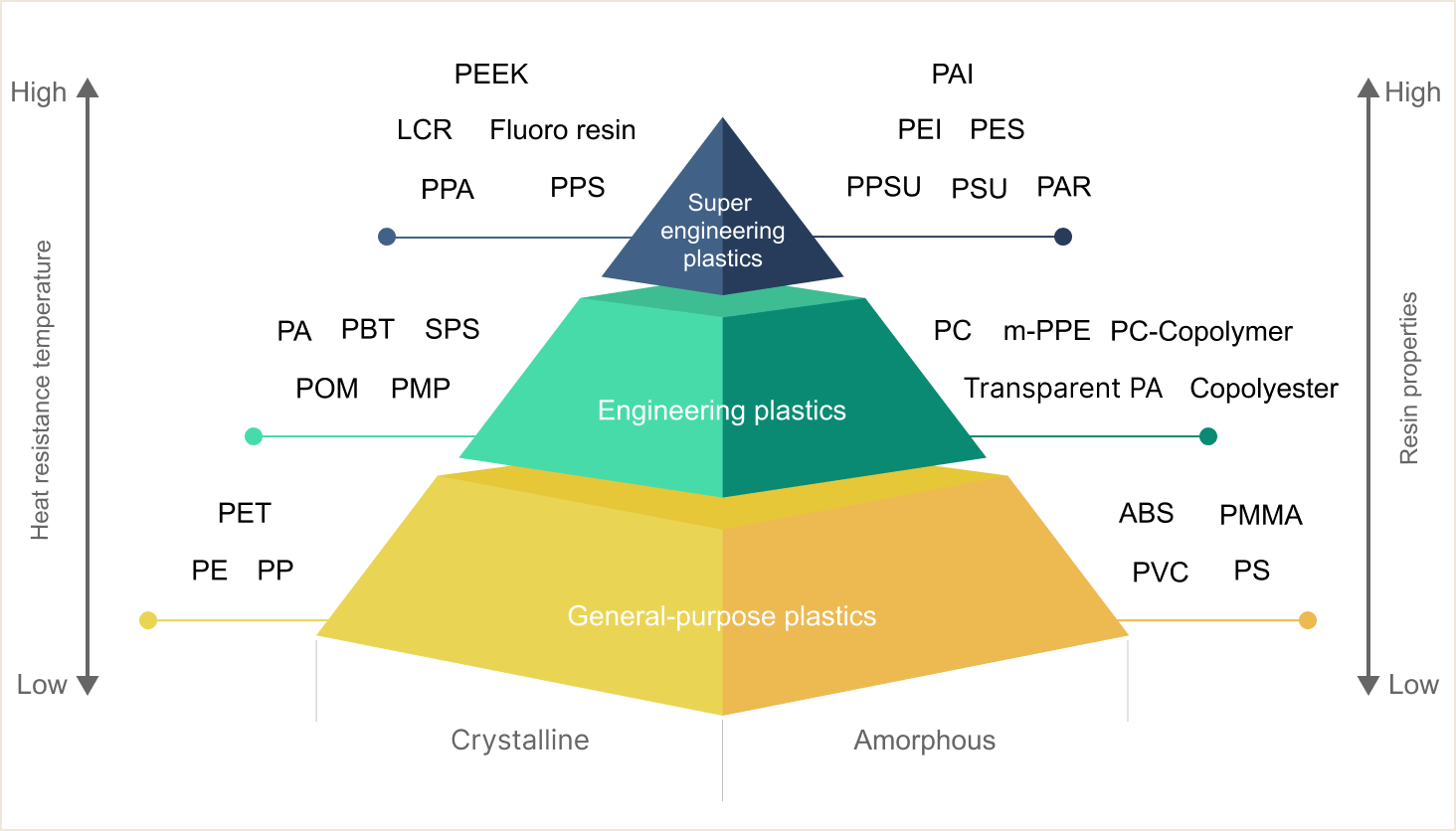Overview
Applications
Comparison

Chemical formula

Specific gravity
1.11 (GF15%)

Thermal properties
100
Tg(℃)

270
Tm(℃)

Characteristics

Hydrolysis resistance

Low dielectric loss

Heat resistance with GF

Acid/alkali resistance

Chemical resistance

Impact resistance

Moldability
Commentary
It has the same chemical formula as the amorphous, general-purpose plastic "PS (polystyrene)."
The styrene groups are arranged in an orderly, alternating pattern (syndiotactic), which gives it crystallinity and improves its heat resistance, etc.
Its three-dimensional structure is different from that of general-purpose PS, which has no pattern (atactic).
Key points
- Because of its crystalline nature, it has superior chemical and heat resistance compared to general-purpose PS.
- Due to its low dielectric loss, it does not absorb electromagnetic waves easily.
- Basically contains glass fiber (GF) and is molded in the mold at a high temperature (130-155℃).

Microwave cookware

Reason for adoption
Low microwave heating (low dielectric loss), dishwasher-safe (heat, chemical, and hydrolysis resistant)
Source Idemitsu Kosan Co.PCB Connectors

Reason for adoption
Lead-free solder heat resistance (melting point 270°C), lightweight (low specific gravity)
Source Idemitsu Kosan Co.Millimeter wave radar radome

Reason for adoption
Millometer wave radar communication performance (excellent electromagnetic wave transparency in the millimeter wave range)
Source Idemitsu Kosan Co.


Crystalline

Polyethylene

Polypropylene

Polyethylene
Terephthalate

Polyoxymetylene /
Polyacetal

Polybutylene
Terephthalate

Polyamide 6 /
Polyamide 66

Syndiotactic
Polystyrene

Poly Phenylene Sulfide

Polyphthalamide

Liquid Crystal Polymer

Fluorocarbon Polymers

Polyether-etherketone

Polymethyl-pentene






























